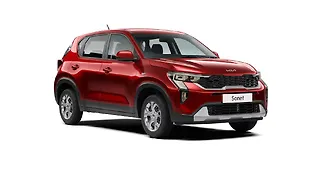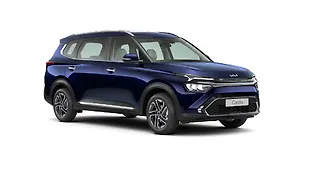Introduction
Things We Like

As we said in the introduction report, the Sonet is certainly a head-turner. And it continues to grab second glances, thanks to its aggressive styling rounded off in a well-proportioned package. So, buyers who want attention for their cars would surely love the Sonet.

Behind the wheel, the Sonet is comfortable to drive around in the city. Owing to its compact dimensions and light controls, maneuvering it around town is a breeze. It also helps when you have to park it in tight spaces. Not surprising then, the Sonet’s light controls don’t tire you out even after a whole day of driving.

Moreover, driving it in bumper-to-bumper traffic is also an easy affair. We faced some horrible traffic jams and the Sonet’s smooth-shifting gear lever along with a light and progressive clutch pedal kept our stress at bay. As for the ride, it’s well balanced and the Sonet managed to absorb our monsoon-ravaged roads with good composure.

Coming to the engine, there’s ample low and mid-range grunt available from the 1.5-litre oil burner. So, while pottering around the city speed, you don’t have to continuously keep working through the gears to keep the momentum going.

What’s more, this is a frugal motor too as it managed to return an impressive figure of 16.28kmpl in our city fuel efficiency test. This means it is also easy on pockets, reducing our trips to the fuel station.

In terms of ergonomics and practicality, the Sonet manages to impress too. All the buttons, controls, and the touchscreen are easy to reach and operate, even while driving. Then there are some feel-good features. This includes cooled seats for both front passengers which turned out to be a blessing in the October heat.

Then you have the fancy ambient lighting that changes colours with respect to the music. They do get you some bragging rights amongst oblivious passengers. We also loved the touchscreen not only because it’s smooth and fluidic to touch, but is also easy to use and has a host of usable information.

What We Didn’t Like

With its compact footprint, the shoulder and knee room in the rear seats of the Sonet is a tight affair. As can be seen in the picture, only two passengers would be comfortable in the back seat and squeezing in a third would not be a comfortable idea.

With no wireless charger in our HTX Plus trim, which is a sore miss, you have an extra tray to stow your phone. However, if you carry around a large phone – which is a trend off late – it won’t fit flat in the lower tray. Also, the centre cup holders aren’t large enough to hold our flask water bottle, so for anything larger than a 750ml pet bottle, only the door-pad bottle holders come in handy.

As mentioned earlier, we have the top-spec HTX Plus variant and yet it misses out on a few features which are otherwise offered on the GTX trim. This includes features like the six airbags, front parking sensors, and a wireless charger. And we must say the GT Line also looks much better with its additional style quotient. Also, there’s no automatic option available for the HTX/HTX Plus for now. But Kia might rejig the portfolio later and these niggles could be taken care of.

What’s next?

In the next report, we plan on taking the Kia Sonet out for some outstation shoots and trips to gauge its highway manners. We’ll take note of how this sub-four metre SUV performs on long jaunts, loaded with four passengers and their luggage. We’ll also see whether the Sonet gives us any more reasons to complain; or if it continues to impress.
Pictures by - Kaustubh Gandhi

![Kia Sonet [2020-2022] Image Kia Sonet [2020-2022] Image](https://imgd.aeplcdn.com/272x153/n/cw/ec/41523/sonet-exterior-right-front-three-quarter-110.jpeg?q=80)
























